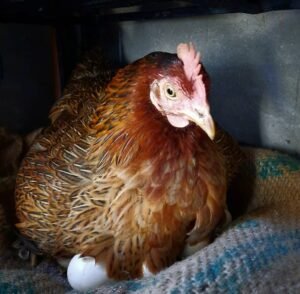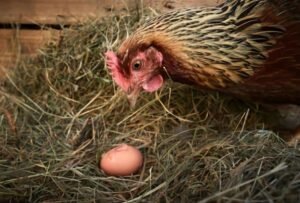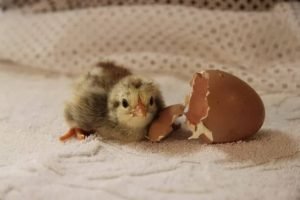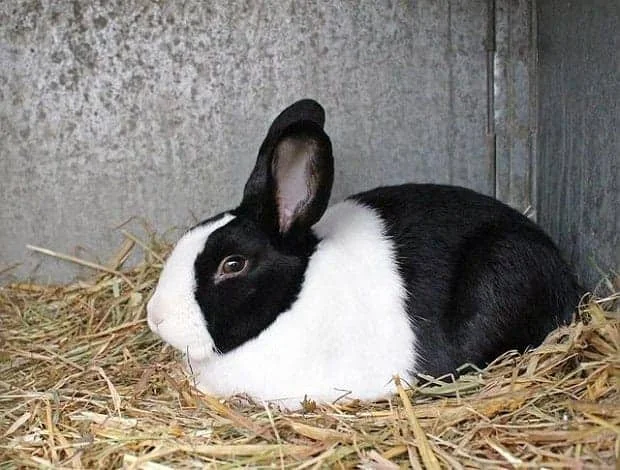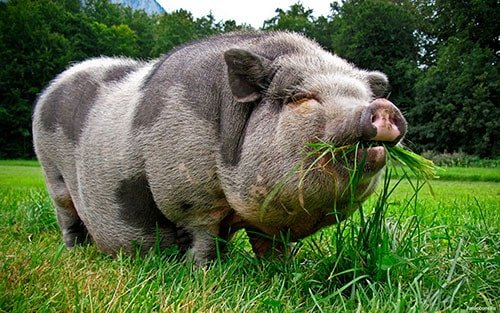Breathtaking Silkie Chicken Characteristics That’ll Sweep You Off Your Feet

If you like to have a breed of chicken that is beautiful, docile and gentle for kids to play with, then you should consider the Silkie chicken.
Silkie chickens are an amazing breed of chickens that make amazing pets.
Nevertheless, you still need to learn about this chicken breed to be able to decide whether it is the right breed for you or not.
In this article, you will find information about the origin of the Silkie chicken, its lifespan, its characteristics and other valuable information.
So, stick around as I walk you through the details.
Let’s get started.
What is a Silkie chicken?
Silkie chickens are the only breed of chickens in the chicken world that has a fluffy appearance.
This unique and fluffy appearance makes them beautiful for exhibitions.
Their feathers feel like satin and silk, little wonder they are called Silkie chicken.
They are totally covered with soft fur-like feathers even up to the head.
Nonetheless, beneath all their soft feathers you will be shocked to find black skin, meat, bone and muscles.
This makes many give it the nickname “black bird”
What is the origin and history of Silkie chickens?
The first exact appearance of the unique breed is actually unknown.
But according to Wikipedia, the most documented point of origin of Silkie chicken is ancient China.
Other places such as India and Java in Southeast Asia have also been mentioned as possible places of origin.
But the first surviving written account of Silkie chicken is from Marco Polo, a man who wrote about a furry chicken as he travelled around Asia.
Also, a writer and naturalist named Ulisse Aldrovandi wrote about wool-bearing chickens and chickens clothed with hair like that of a black cat in 1598.
His description invariably suits a Silkie.
It was said that the Silkies made their way to the West through the Silk Route and Maritime trade.
A popular myth spread by Early Dutch breeders arose in the west that Silkie chickens were the offspring of chickens and rabbits.
As unbelievable as this ideology may sound, many bought the idea back then in the 1800s.

What are the characteristics of Silkie chickens?
Let’s consider the characteristics and attributes of this fluffy chicken breed.
1. They are Ornamental breeds:
Silkie Chickens are sincerely a breed of beautiful chicken to look upon because their whole body is covered with silky feathers.
Their fluffy and furry appearance has made them likeable to behold and touch
So they are often kept in the compound as ornamental pets by backyard keepers.
2. Silkie Chickens are made up of Crest:
Interestingly, the silkie Chicken has a crest.
The crest consists of a spherical puff of feathers on its head.
Making it appear more beautiful.
3. They have Feathered Legs:
One of Silkie Chickens known feature is their feathered legs.
Like you can spot it at first sight.
They have feathers growing on the outside of their shanks and even on their toes.
4. Silkie chickens are fair egg layers:
They are not considered to be good birds for egg production.
Silkies are poor egg layers that layer an average of 2 – 3 small eggs in a week.
This accounts for approximately 100 – 200 eggs in a year.
5. They are relatively peaceful and calm birds:
These breeds of chicken are relatively quiet birds and very calm in nature even without necessarily being tamed.
They are quite docile and friendly to humans and could make great pets for children
6. Silkies have Black Skin:
This distinctive feature of a Silkie chicken is known as Melanism.
Silkies have black skin, muscle and bones and also dark beaks, combs and wattles.
Some people believe that Silkie chickens can provide magical and medicinal benefits to anyone who eats them.
In China, for instance, they use black bones to make Chinese medicine for curative purposes.
7. They have Five toes:
Other breeds of chicken usually have four toes but when it comes to Silkie chicken their toes are five in number.
Apart from Silkie chicken, there are few other birds that have five toes.
Such chickens include the Faverolles, Houdan, Sudan and Dorking.
This extra fifth toe in Silkie chicken grows above the hind toe and curves upward and in most cases do not touch the ground.
8. Silkie chickens come in a variety of colours:
This unique breed of chicken comes in a variety of 8 beautiful colours as recognized by the American Poultry Association.
The colours include Blue, Buff, White, Gray, self-blue (lavender), Partridge, and Splash
9. Cannot survive in very cold temperatures:
Despite being covered with silkie feathers from head to toe, Silkie chicken does not thrive well in very cold and damp climates.
This is because they do not have barbicels on their feathers
Therefore in wet seasons, they are likely to get drenched to the skin.
Unless they are provided with a dry and secure accommodation.
If on any occasion they get wet, they need to be dried and brought to a warm temperature.
10. Silkies love to free-range but cannot fly:
These amazing little breeds cannot fly like other breeds.
Therefore, they require adequate supervision and protection from predators when left to free-range.
Table summarizing the Silkie breed information
| Skin colour | Black |
| Egg colour | Brown |
| Comb type | Single |
| Setter/Broody | Yes |
| Especially Docile | Yes |
| Use | Ornamental, Exhibitions, Curative purposes |
| Cold Hardiness | Hardy in winter |
| Conservation status | Not at risk (FAO 2007) |
| Heat Tolerance | Tolerates heat well. |
| Also Known As | Silky Chinese silk chicken. |
| Personality | Calm, Friendly And Docile |
| Country of origin | China |
| Standard | Silkie Chickens |
| Bears Confinement | Bears confinement well |
| Weight | Rooster: 0.9–1.4 kg (2–3 lb) Hen: 0.7–0.9 kg (1 and a half –2 lb) |
| Varieties | Blue, Buff, White, Gray, self-blue (lavender), Partridge, and Splash |
Why choose Silkie chickens?
Why are these breeds of chicken exceptional?
What makes them good?
Here are some reasons why you should choose the Silkie Chickens;
1. They are very easy to care for:
One good thing about Silkie chickens is that they are literally easy to cater for.
They do not require much space to thrive, moreover, they don’t eat much and are very fun to be with.
2. Silkie Chickens are very Broody:
Silkie hens are quite known for their persistent broodiness and are popularly used for hatching a valuable number of eggs.
So if you are looking for a chicken that loves to brood, Silkie chicken is good for you.
Silkie chickens also make very good mothers.
3. They make amazing pets:
If you are looking for a good and interactive companion as a pet, then I strongly recommend Silkie chicken.
Apart from the fact that they are beautiful to hold and behold.
They also have a very calm disposition and are very peaceful and friendly.
If you make them your pet, you will certainly enjoy them.
They are gentle, cute and cuddly and can easily feed on your hands.
With Silkie chicken as your pet, you honestly won’t feel lonely.
4. The Silkie’s are very perfect exhibition shows:
This breed of chicken is very good for exhibition shows.
And could fetch you some cool cash.
5. Silkie chickens are not noisy:
If you are looking for a less noisy chicken to raise in your backyard then Silkie chicken could come in handy.
6. These chickens get along very well with other farm animals:
If you have other farm animals in your possession, that shouldn’t be a problem.
Silkies can get along with other farm animals.

What are the disadvantages of having the Silkie Chickens?
Having known the beautiful qualities of this unique chicken breed, let’s look at some of their disadvantages.
1. Silkie Chickens are petite:
This breed of chickens are not quite big and so are not the best option when it comes to raising them for meat.
2. They are not prolific in egg-laying:
This breed of chickens is not very good when it comes to egg-laying.
They lay approximately 2 – 3 small eggs in a week
This will not come in handy if you are looking at making a profit from their egg-laying capacity.
3. The Silkie’s do not fare well in cold temperatures:
Though they are covered with feathers, the feathers do not protect them during the cold rainy season and these Silkies get wet right through to their skin.
Trying to get the feathers dry and well again would require many efforts.
4. Sadly, the Silkie chickens are prone to bully:
Because of the calm and friendly nature of Silkie chickens, they often tend to be laid back and non-confrontational.
This non-aggressive can make them easily bullied by more assertive birds such as Rhode Island Reds and other aggressive predators.
Frequently Asked Questions About Silkie chickens
What is the lifespan of Silkie chickens?
Silkie Chickens have a life expectancy of 7 – 8 years under proper care and supervision.
Nevertheless, their ability to live up to their life expectancy would certainly depend on the quality of food and care you provide for them.Are Silkie chickens good for meat?
Silkie Chickens have black meat that is good for consumption.
People believe that eating Silkie Chicken has some curative, magical and medicinal benefits. (Who knows!!!)
But because of the small size of Silkie Chickens, they do not yield enough meat as the Brahma, Naked neck etc.Can Silkie chickens be trained as pets?
Silkie Chickens make Amazing pets. That is because they have a very calm and friendly nature.
And you would easily fall in love with them at first sight.
Due to their calm and docile nature, you can easily train them as pets.
Their silkie feathers make them admirable and soft to touch.
They love to be stroked and they interact very well with humans.
So if you are looking for a good bird pet, Silkie is best for you.Are Silkie chickens good egg layers?
Silkie Chickens are not very good egg layers. In fact, they are poor egg layers.
So if you are looking for a breed that lays lots and lots of eggs, then the Silkie chicken breed is not for you.How often do Silkie chickens lay eggs?
Silkie chickens lay approximately 2- 3 small eggs in a week, which is approximately 100 – 120 eggs in a year.
What do Silkie chickens eat to grow big?
Just like every other breed Silkie chickens feed on a variety of grains including corn, barley, oats, and wheat.
They can also feed on worms, and bugs when left to free range.
You could feed Silkie chickens with standard 16% layer feed and add supplements such as fresh greens to make them more happy and active and also grow well.How fast do Silkie chickens grow?
Silkie chickens tend to grow fast when given the right feeds and also be healthier when provided with the right vaccination.
Are Silkie chickens noisy?
Silkie chickens are very quiet chickens.
They have a gentle and calm nature and are not prone to noise.
If you hear them make noise it could be because of an attack from predators.
Silkie hens even when they want to lay eggs they do so quietly.
A rooster still crows though but are still less noisy than other Chicken breeds.What is the habitat and environment of Silkie chickens?
Silkie chickens thrive well in dry and warm weather conditions.
Conclusion
Looking at the wonderful characteristics of the Silkie chickens you would agree with me that they are a really amazing breed to train as pets.
Silkies are a true breed to consider if u want to add a little beauty to your homes and environs.
- 12 Best Chicken breeds for Eggs – chicken breeds for eggs
- When Do Chickens Start Laying Eggs Regularly?
- How Many Eggs Does A Chicken Lay In A Week?
- Fermenting chicken feed – The definitive guide
- 10 Sure Ways To Stop Chickens from Eating Their Eggs [+Bonus]
- 6 Best Chicken Egg Incubators for Chicken Eggs and Other Birds
